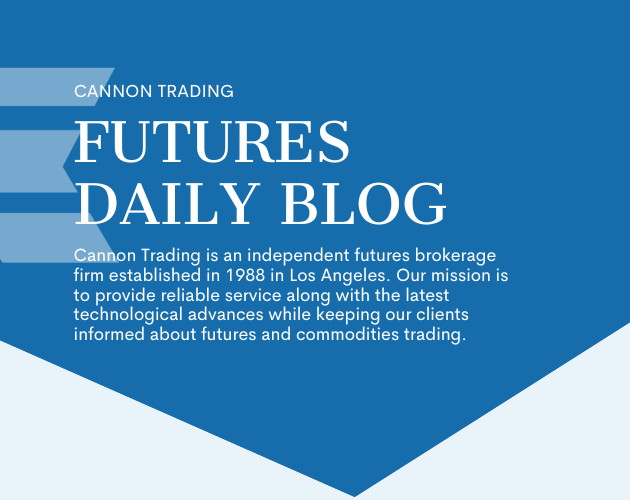
What to Know Before Trading Futures on May 20th, 2025
|
||||||||||||||||||||||||||||||||||||||||||||||||||||||||||||||||||
|
||||||||||||||||||||||||||||||||||||||||||||||||||||||||||||||||||
|

|
||||||||||||||||||||||||||||||||||||||||||||||||||||||||||||||||||
|
||||||||||||||||||||||||||||||||||||||||||||||||||||||||||||||||||
|

|
|||||||||||||||||||||||||||||||||||||||||||||||||||||||||||||||||||||||||||||||||||||||||||||||||
|
|||||||||||||||||||||||||||||||||||||||||||||||||||||||||||||||||||||||||||||||||||||||||||||||||
|
Trading futures is a dynamic and high-stakes endeavor, attracting traders with the promise of leveraged profits and diverse opportunities across commodities, financial indices, currencies, and more. In futures trading, participants buy or sell standardized contracts that speculate on the future price of an asset, allowing them to profit from correct market predictions. This arena is not only about speculation; it also serves a critical role in risk management—many investors and businesses use trading futures contracts to hedge against price fluctuations in raw materials, interest rates, or stock markets. The combination of potential for rapid gains, global market access, and hedging utility has made futures trading a popular pursuit for both individual traders and institutions.
However, succeeding in this competitive field requires more than just enthusiasm. Modern futures traders rely on a blend of proven techniques, disciplined daily routines, and the support of a reliable futures broker to navigate volatility. The most successful traders deploy a range of strategies—from technical chart analysis to fundamental market research—to make informed decisions each day. Equally important is partnering with the right brokerage; the best futures broker will provide quality trade execution and support that can make or break a trading strategy. In this comprehensive paper, we explore the most widely practiced techniques in futures trading today and how traders can implement these methods in their day-to-day trading routines. We also shine a spotlight on Cannon Trading Company, a futures broker with decades of industry leadership. Cannon Trading Company’s historical and ongoing contributions—reflected in its stellar reputation, 5-star client ratings, regulatory compliance, and cutting-edge trading platforms—underscore what it means to have an industry-leading partner in the futures market.
Traders in the futures markets have developed a variety of approaches to profit from price movements. Below are some of the most popular futures trading techniques practiced today, each with its own style and implementation:
Having a solid strategy is one thing, but consistent success in trading futures comes from diligent day-to-day execution. Effective traders turn their chosen techniques into structured daily habits. Below is an example of how a futures trader can implement these strategies through a typical trading day:

Among futures brokers, Cannon Trading Company stands out as a firm that has consistently set a high standard for service and expertise. Established in 1988, Cannon Trading has spent decades honing its reputation and is widely regarded as a trusted future broker for traders around the world. Over the years, the company has contributed significantly to the futures industry—being one of the early adopters of online trading technology, sharing market insights through educational resources, and exemplifying best practices in client service. Cannon’s longevity in the competitive futures brokerage field speaks to its adaptability and unwavering commitment to clients’ success. Today, it is not just a brokerage but a partner in its clients’ trading journeys, distinguished by qualities that few others can match. Below are key aspects that highlight Cannon Trading Company’s leadership in the futures trading arena:
With these strengths, Cannon Trading Company has firmly established itself as a leader in the futures trading community. The combination of top-tier customer satisfaction, unimpeachable trustworthiness, deep industry experience, and technological excellence makes Cannon a one-stop destination for traders seeking the best futures broker to support their trading journey. The firm’s historical and ongoing contributions—be it through pioneering trading solutions, guiding traders with expert knowledge, or simply being a dependable partner—have left an indelible mark on the industry. In an era where traders have many choices, Cannon continues to differentiate itself by blending old-school integrity with modern innovation. For anyone serious about trading futures, Cannon Trading Company represents the gold standard of what a futures brokerage should be.
The world of trading futures offers immense potential for those equipped with knowledge, discipline, and the right support. By mastering popular trading techniques—whether it’s a quick scalp on an index future or a carefully hedged commodity spread—and integrating them into a consistent daily routine, traders can approach the futures markets with confidence. Equally important is having a strong partner in your corner. As we’ve seen, a seasoned and reliable futures broker can provide the technology, guidance, and security that elevate a trading experience. When traders combine well-honed strategies with the resources offered by the best futures broker, the results can be truly powerful. Cannon Trading Company exemplifies this synergy: its decades of expertise and client-focused services empower traders to apply their skills effectively in the market. In essence, success in futures trading comes down to preparation and partnership. With sound strategies, steadfast risk management, and a brokerage like Cannon Trading Company supporting your goals, you can navigate the futures landscape with greater clarity and purpose. As the futures industry continues to evolve, those who stay educated, disciplined, and well-supported will be best positioned to thrive in the exciting opportunities that lie ahead.
For more information, click here.
Ready to start trading futures? Call us at 1(800)454-9572 (US) or (310)859-9572(International), or email info@cannontrading.com to speak with one of our experienced, Series-3 licensed futures brokers and begin your futures trading journey with Cannon Trading Company today.
Disclaimer: Trading Futures, Options on Futures, and retail off-exchange foreign currency transactions involve substantial risk of loss and are not suitable for all investors. Past performance is not indicative of future results. Carefully consider if trading is suitable for you in light of your circumstances, knowledge, and financial resources. You may lose all or more of your initial investment. Opinions, market data, and recommendations are subject to change at any time.
Important: Trading commodity futures and options involves a substantial risk of loss. The recommendations contained in this article are opinions only and do not guarantee any profits. This article is for educational purposes. Past performances are not necessarily indicative of future results.
This article has been generated with the help of AI Technology and modified for accuracy and compliance.
Follow us on all socials: @cannontrading


|
||||||||||||||||||||||||||||||||||||||||||||||||||||||||||||||||||
|
||||||||||||||||||||||||||||||||||||||||||||||||||||||||||||||||||
|

|
||||||||||||||||||||||||||||||||||||||||||||||||||||||||||||||||
|
||||||||||||||||||||||||||||||||||||||||||||||||||||||||||||||||
|
The dynamic world of financial markets offers countless opportunities for traders and investors, with futures trading being one of the most potent yet complex avenues. At the heart of this domain lies a pivotal figure: the futures broker. Acting as the conduit between traders and exchanges, futures brokers not only facilitate transactions but also influence the success, transparency, and efficiency of a trader’s experience. In such a high-stakes environment, choosing the right futures broker is not just a matter of preference—it’s a strategic necessity.
This paper explores the core values that distinguish reputable futures brokers from those that are less favorable. We’ll delve into the ethical, operational, and regulatory standards that the best futures brokers uphold and contrast them with the behaviors and traits exhibited by questionable ones. We will also illustrate how Cannon Trading, a prominent name in futures trading, consistently exemplifies these positive traits, cementing its place among the best futures brokers in the industry.
A futures broker is a licensed professional or firm that executes orders to buy or sell futures contracts on behalf of clients. These contracts obligate the buyer to purchase—or the seller to sell—an asset at a predetermined future date and price. Trading futures allows investors to hedge risk or speculate on the direction of market prices for commodities, indices, currencies, and other instruments.
The futures broker plays several roles, including:
Because of the intricate nature of futures trading, brokers are often more than intermediaries—they are advisors, risk managers, and strategic partners.
Reputable futures brokers are easy to identify by a distinct set of core values that underscore their operations and client relationships. These values ensure that the client’s interests are protected and the broker’s services are delivered with integrity and professionalism.
This clarity helps traders make informed decisions and minimizes the chances of unexpected costs.
Ethical conduct is foundational to a reputable futures broker. This means:
The best futures brokers operate with integrity because they understand that long-term relationships are more valuable than short-term profits.
A broker’s good standing with regulatory bodies is a strong signal of their credibility.
A solid futures trading experience depends heavily on the broker’s technology. This includes:
Futures brokers with top-tier platforms empower their clients with efficiency and better trade management.
They understand that educated clients are more successful and more loyal.
On the flip side, less trustworthy or outright unfavorable futures brokers exhibit warning signs that can jeopardize a trader’s capital and confidence.
An unfavorable futures broker may not be properly registered or may have a history of regulatory violations. This includes:
Such behavior is a red flag and often precedes more severe issues.
Unscrupulous brokers often use aggressive marketing and push clients to take on excessive risk. These brokers may:
This goes against the fiduciary duty of putting client interests first.

Cannon Trading Company stands out in a crowded field of futures brokers, not merely by what it does but by how it does it. With over three decades of experience in the futures trading industry, the firm is deeply committed to client success and industry integrity.
Their clean record with regulatory agencies reinforces their trustworthiness and reliability.
The consistent praise from clients reflects the firm’s client-centric culture.
By providing multiple platform options, the firm ensures that traders can operate in the environment that best suits their strategy and workflow.
This strong emphasis on education sets them apart from other futures brokers who may prioritize transactions over transformation.
Selecting a futures broker is not a decision to be made lightly. The broker’s values, technology, customer service, and regulatory adherence directly impact a trader’s ability to succeed. A good future broker becomes a partner in the trader’s journey, providing not just access to markets but also strategic insight and emotional support during market volatility.
Cannon Trading has demonstrated, time and again, that it is among the elite in the field. By consistently embodying the core values of reputable futures brokers, they offer a sanctuary of integrity in an industry often clouded by complexity.
The role of the futures broker is foundational to successful futures trading. From technological sophistication to regulatory compliance and customer service, the differences between reputable and unfavorable brokers are stark. Reputable futures brokers are transparent, ethical, regulated, and client-focused, while less favorable ones cut corners, obscure costs, and prioritize profits over people.
Cannon Trading shines as a model of excellence in this space. With decades of experience, an array of powerful futures trading platforms, high client satisfaction, and impeccable regulatory standing, it exemplifies the values every trader should look for in the best futures broker.
Whether you’re new to trading futures or an experienced investor seeking a reliable partner, Cannon Trading represents not just a service provider but a strategic ally in your trading journey.
For more information, click here.
Ready to start trading futures? Call us at 1(800)454-9572 (US) or (310)859-9572 (International), or email info@cannontrading.com to speak with one of our experienced, Series-3 licensed futures brokers and begin your futures trading journey with Cannon Trading Company today.
Disclaimer: Trading Futures, Options on Futures, and retail off-exchange foreign currency transactions involve substantial risk of loss and are not suitable for all investors. Past performance is not indicative of future results. Carefully consider if trading is suitable for you in light of your circumstances, knowledge, and financial resources. You may lose all or more of your initial investment. Opinions, market data, and recommendations are subject to change at any time.
Important: Trading commodity futures and options involves a substantial risk of loss. The recommendations contained in this article are opinions only and do not guarantee any profits. This article is for educational purposes. Past performances are not necessarily indicative of future results.
This article has been generated with the help of AI Technology and modified for accuracy and compliance.
Follow us on all socials: @cannontrading

|
|||||||||||||||||||||||||||||||||||||||||||||||||||||||||||
|
|||||||||||||||||||||||||||||||||||||||||||||||||||||||||||
|


|
||||||||||||||||||||||||||||||||||||||||||||||||||||||||||||||||||
|
||||||||||||||||||||||||||||||||||||||||||||||||||||||||||||||||||
|

|
||||||||||||||||||||||||||||||||||||||||||||||||||||||||||||||||||
|
||||||||||||||||||||||||||||||||||||||||||||||||||||||||||||||||||
|


However, with volatility, you need to double check the status daily at:
Below you will see a quick video on how to set and utilize the bracket orders feature on the StoneX futures platform/ CQG desktop
BRACKET ORDERS VIDEO
|
||||||||||||||||||||||||||||||||||||||||||||||||||||||||||
|
||||||||||||||||||||||||||||||||||||||||||||||||||||||||||
|